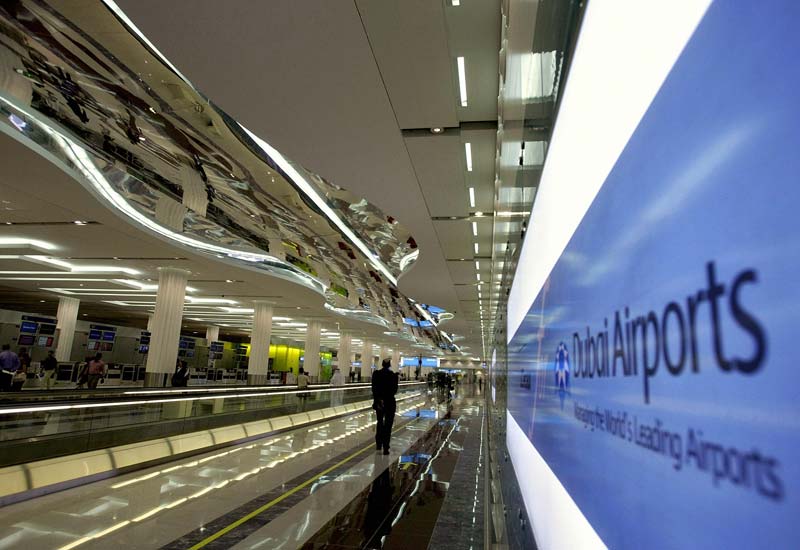Airports in the Middle East will need to invest $151 billion in capacity expansion as the global air passenger demand is expected to increase more than two-fold in 2040, according to the Airport Council International (ACI).
“This necessitates an investment totalling $2.4 trillion for Middle East and Asia-Pacific airports until 2040 to accommodate this growth,” ACI said.
The Middle East and Asia-Pacific regions are expected to account for 58 per cent of the global air passenger demand in 2040. The ACI forecasts close to 19.7 billion passengers are expected to traverse the world’s airports by 2040 and the Middle East airports will handle 1.1 billion passengers by 2040 – a significant increase from 2019’s 405 million.
The CAPA – Centre for Aviation, one of the world’s most trusted sources of aviation market intelligence, says there have been 425 major construction projects at existing airports, with $450.7 billion in total committed expenditure globally, each of which is at various stages, from preparatory to about to conclude, along with 225 new airport projects and airport investor numbers swelling to 1074, including 258 airport operator groups or consortiums. Its database has region-wise listed the total numbers of the airport project and the volume of investment include 155 in Middle East worth $209.4 billion.
The Middle East region, positioned at the strategic crossroads of major economies of Asia, Africa and Europe, has transformed into a major international hub and continues to be an inspirational growth story. With over 110 airports, this is already among the fastest growing in the world, accounting for 170 million of the global traffic.
As new airports come up and existing facilities get expanded and upgraded to meet future passenger demands, industry players will discuss the huge investments coming back on the tracks at the Airport Show in Dubai from May 9 to 11.
The 22nd edition of the world’s largest annual airport industry B2B platform will connect over 200-plus aviation brands and 100-plus buyers from over 30 airports and aviation authorities from 20 countries. Also taking place on the sidelines of the Airport Show is the Global Airport Leaders’ Forum (GALF).
The high-profile global platform will see over 4,500 visitors, and exhibitors have been confirmed from the US, Italy, France, Germany, Denmark, Turkey, Netherlands, China, Belgium, Korea, Sweden and the UAE.
May Ismail, Event Manager at Reed Exhibitions, its organizer, said the Airport Show-2023 will see almost everything that airports require being on display. The 2022 edition witnessed 4,200-plus attendees from 71 countries and over 160 exhibitors from 23 countries and 100-plus buyers from 35 companies and 23 countries along with five country pavilions. This edition will break those records for sure as aviation is coming back in its full splendor.
According to GlobalData, the total pipeline of new airport construction projects had a combined value of $1.64 trillion while the global fleet of aircraft is projected to touch 36,500 aircraft by 2031 and the global airport construction market size has been revised to $1.4 trillion by 2026. There are several countries which are pursuing airport developments at a break-neck speed now.
India, the world’s third-largest civil aviation market, plans to increase to 220 operational airports by 2027, up from 141 now. Its most populous neighbor, China, is expanding and by 2025 will have more than 30 civil airports with a targeted capacity of two billion passengers. Indonesia, Vietnam and the Philippines to are in the race to catch up with new airport developments.
Turkey’s TAV will continue its investments in Almaty and Antalya airports in 2023 and it is building a new terminal and additional units in Almaty with an investment of $200 million to double the capacity to 60 million. TAV will start investing in Esenboğa Airport in the Turkish capital Ankara. Oman Airports has inked a MoU to develop Kilimanjaro Airport and an ambitious plan is to develop a southern Africa hub in Harare in Zimbabwe.
In the UAE, the New Sharjah International Airport Expansion, costing an estimated $517 million, will get completed by Q4 2024. The work involves the construction of a new passenger terminal and supporting infrastructure to raise its capacity to accommodate 20 million passengers by 2023. Earlier, it had been reported that the Arab world’s most vibrant economy had planned investments of over $23 billion in airport development and expansion projects over this decade.
The Kuwait Airport’s Passenger Terminal 2 expansion, costing $4.36 billion will boost the airport’s annual passenger handling capacity to 13 million passengers per year with the flexibility to increase to 25 million passengers and 50 million passengers in the future. As the project aims for the status of the world’s first LEED Gold-accredited passenger terminal building, the project is expected to be completed fully by 2025.
In Qatar, Hamad International Airport Phase 2B’s expansion work on the passenger terminal and extension of concourses D and E in Doha will commence likely this year and will enhance passenger capacity to more than 60 million annually.
The new cargo terminal will be completed by 2023 and will feature a new 3-level facility and an 85,000-sq-m building footprint. Musandam Airport in Oman, costing $250 million, is expected to get completed by Q4 2026. The work includes the construction of two runways and a passenger terminal with a capacity of 250,000 passengers per year. In Egypt, plans to build Terminal 4 at Cairo International Airport are advancing.
Saudi Arabia is set to build one of the world’s largest airports which will have six parallel runways. The airport will help drive annual passenger traffic to 120 million by 2030 and 185 million by 2050. The Kingdom is undertaking a massive airport expansion and upgrades programme to serve 330 million travelers by 2030 through $147 billion investments.
The Red Sea International Airport is set to open in late December 2023. King Salman International Airport aims to accommodate up to 185 million passengers and process 3.5 million tons of cargo by 2050. Jeddah Airport City at King Abdulaziz International Airport (KAIA) is taking airport-centric development to a new level. Its expansion could push the passenger capacity to 114 million passengers per year after 2035, after its completion in 2028. Total investment is estimated to be $4.5 billion. It will be Saudi Arabia’s first airport city development in line with Vision 2030.
ME airports ‘need to invest $151bn in capacity expansion’


